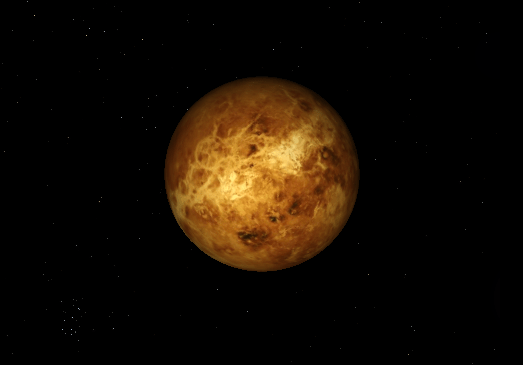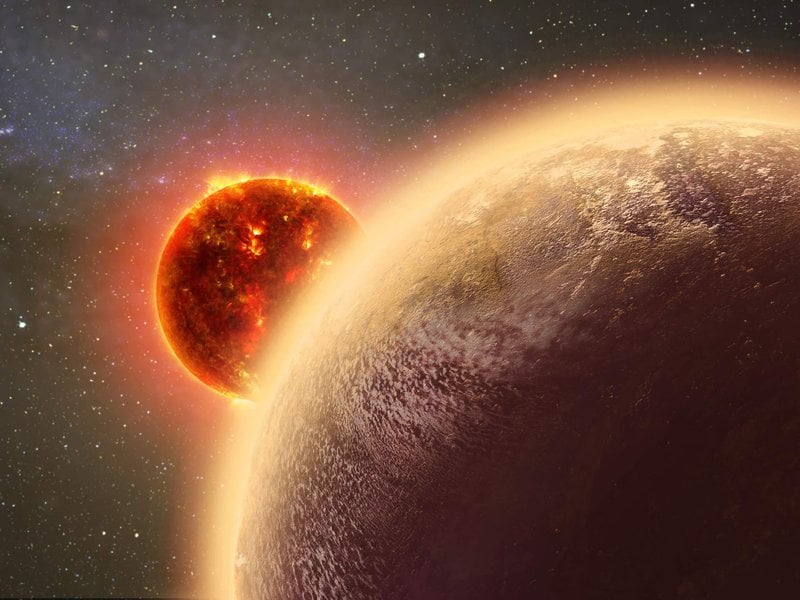There's no sense in sugar-coating it - Venus is a hellish place! It is the hottest planet in the Solar System, with atmospheric temperatures that are hot enough to melt lead. The air is also a toxic plume, composed predominantly of carbon dioxide and sulfuric acid rain clouds. And yet, scientists theorize that Venus was once a much different place, with a cooler atmosphere and liquid oceans on its surface.
Unfortunately, this all changed billions of years ago as Venus experienced a runaway greenhouse effect, changing the landscape into the hellish world we know today. According to a NASA-supported study by an international team of scientists, it may have actually been the presence of this ocean that caused Venus to experience this transition in the first place.
Aside from being extremely hot, Venus also experiences virtually no variations in temperature between day or night or over the course of a year. This is attributed to its extremely dense atmosphere (93 times the pressure of Earth's atmosphere) and the planet's slow rotation. Compared to Earth's relatively fast rotation of 23 hours, 56 minutes and 4 seconds, Venus takes around 243 days to complete a single rotation on its axis.
It's also worth noting that Venus rotates in the opposite direction of Earth and most of the other planets (retrograde rotation). Between this laboriously slow rotation, the planet's thick insulating atmosphere, and the transfer of heat by winds in the lower atmosphere, temperatures on Venus' surface never deviate much from the average of 462 °C (864 °F).
For some time, astronomers have suspected that Venus may have rotated more rapidly and in the same direction as Earth, which would have been a key factor in it being able to support a liquid ocean on its surface (and possibly even host life). As for what caused this to change, a popular theory is that a massive impact slowed Venus' rotation and even reversed it.
For the sake of their study, which recently appeared in *The Astrophysical Journal Letters*, the team led by Dr. Mattias Green (a physical oceanographer from Bangor University) with colleagues from NASA and the University of Washington tested the possibility that it was an ocean on early Venus that was responsible.
To put it simply, tides act as a brake on a planet's rotation because of the friction generated between tidal currents and the sea floor. On Earth, this effect changes the length of a day by about 20 seconds every million years. To quantify how much of a brake an early ocean would place on Venus, Green and his colleagues conducted a series of simulations using a dedicated numerical tidal model.
The team simulated what Venus would be like with oceans of varying depth and a rotational period ranging from 243 to 64 sidereal Earth days. They then calculated the tidal dissipation rates and associated tidal torque that would result from each. What they found was that ocean tides would have been enough to slow it down by up to 72 Earth days every million years, depending on its initial rate of rotation.
This suggests that the tidal brake could have slowed down Venus to its current rotation in just 10 to 50 million years. In this respect, the ocean tides on an ancient Venus could have had a very deterministic effect on the rotational history of the planet. Beyond offering an alternative explanation as to why Venus rotates the way it does, this study has implications that could go a long way towards answering some of Venus' deepest mysteries.
As Dr. Green said in a Bangor University news release:
In other words, tidal-braking may have been an important aspect of what made Venus initially habitable. This is supported by previous research led by Dr. Michael Way (a researcher with NASA's Goddard Institute of Space Studies and a co-author on this study) that indicated how Venus may have once had much more hospital conditions, as a result of having a prograde rotation slower than 16 Earth days.
These findings could also have implications for the study of extrasolar planets, where many "Venus-like" worlds have already been found. Ergo, astronomers could assume with some confidence that exoplanets located near the inner edge of their circumstellar habitable zones have similar rotational periods, which were the result of their oceans slowing them down.
Perhaps, just perhaps, this study could also help inform possible future efforts at restoring Venus' to what it looked like billions of years ago - i.e. terraforming it! Among the many scenarios that have been proposed for making Venus liveable again is the plan to speed up its rotation, thus allowing for a shorter day-night cycle and temperature variations that are similar to Earth's.
But of course, if Venus were to be restored to its habitable state once again, the new residents will have to monitor the tides carefully. Otherwise, in a few eons, they could end up with days that last about as long as a Venusian year again!
Further Reading: Bangor University*, Astrophysical Journal Letters*
 Universe Today
Universe Today



